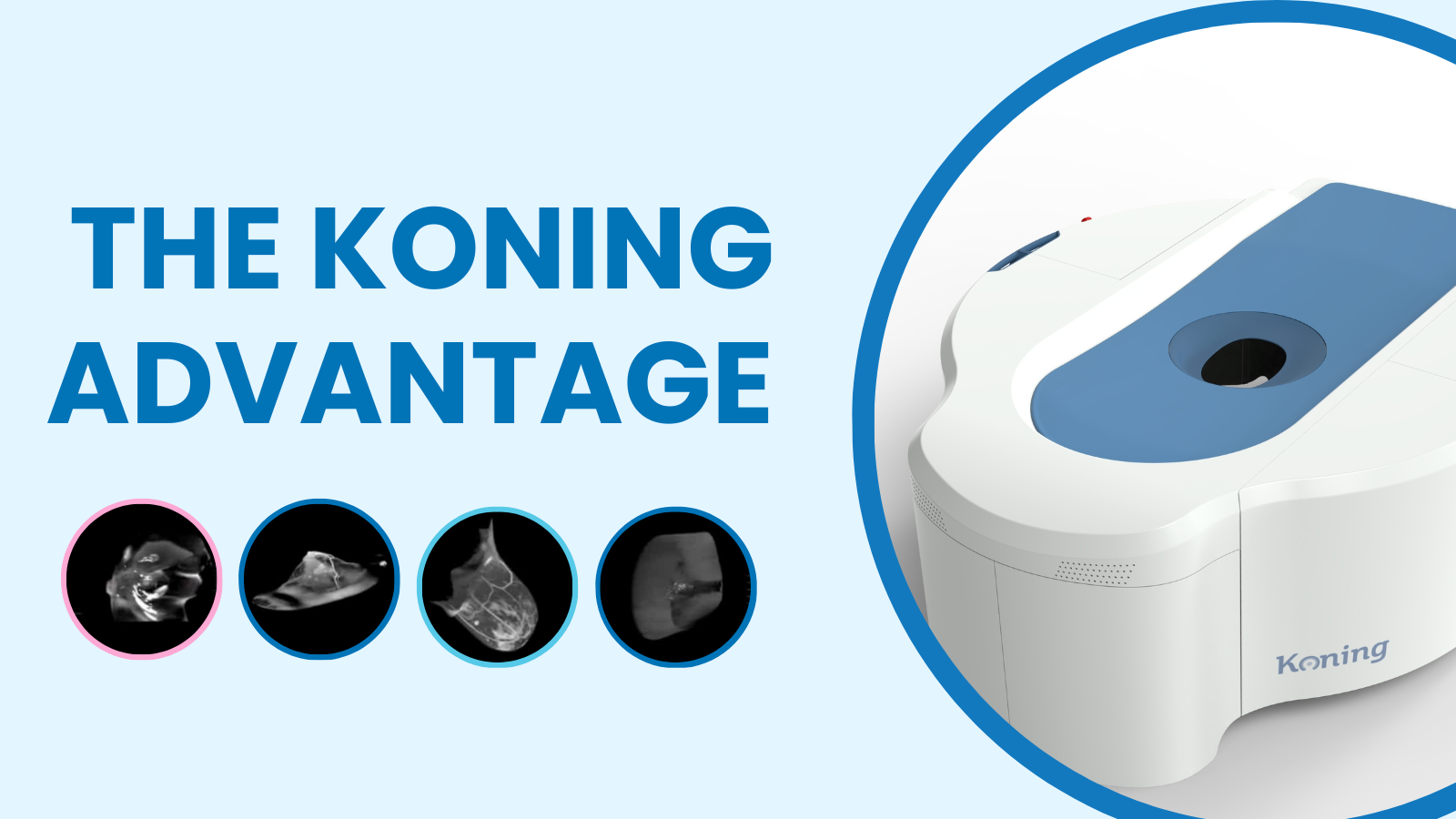
- Blog /
- January 25, 2023
The Koning Advantage
Over the years, the main objective for Koning has been pinpointing and improving the many limitations of traditional breast imaging options, ultimately translating into lower morbidity and mortality from breast cancer. In a clinical review cowritten by 3 clinicians, the distinct advantages of cone-beam breast computed tomography (CBBCT) suggest significant improvement to breast imaging as we know it:
The problem:
- One in eight women in the United States will get breast cancer in their lifetime.
- Some cancers will be detected on screening, but many will not.
- Even if a woman gets regular screening and has no known risk factors, her cancer may still be missed.
For average risk women, the best widely available screening modality around the world today is mammography, which requires two separate views with uncomfortable compression of about 20 pounds. The sensitivity for mammography is also much lower in dense breasts, with mammographically dense breasts having a relative risk of cancer 4–6 times that of women with fatty breasts.
CBBCT is a revolutionary modality that will assist in overcoming the limitations of current imaging for dense breast tissue and overlapping structures.
Advantages of CBBCT:
- Allows easy administration of contrast material for functional imaging.
- Radiation dose on par with diagnostic mammography.
- Rapid 10-second acquisition.
- No intrusive handling of the breasts.
- No breast compression.
- True high-resolution isotropic imaging.
At Koning, we developed the very first FDA-approved unit to utilize CBBCT for diagnostic use in the US. Read more about our revolutionary Koning Vera Breast CT-device here: https://www.koninghealth.com/product-solutions/koning-vera-breast-ct
Source:
O'Connell, Avice M et al. “Cone-Beam Breast Computed Tomography: Time for a New Paradigm in Breast Imaging.” Journal of clinical medicine vol. 10,21 5135. 31 Oct. 2021, doi:10.3390/jcm10215135
